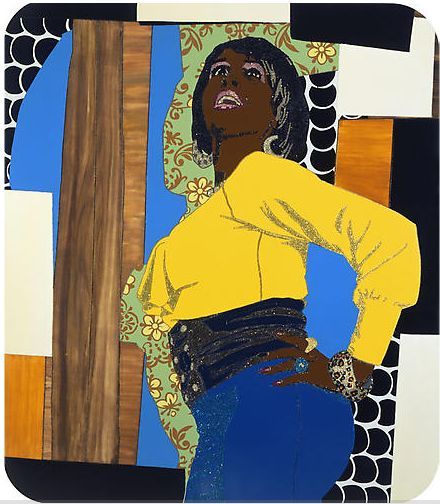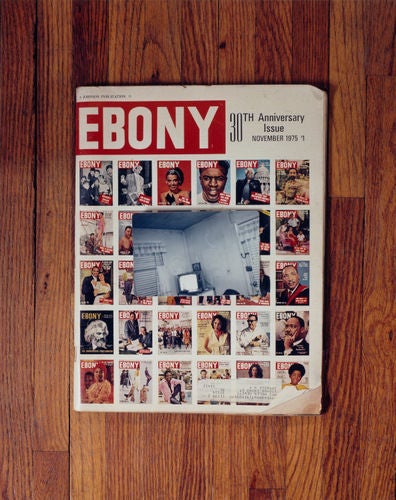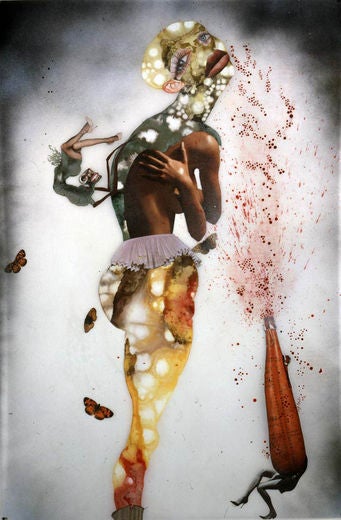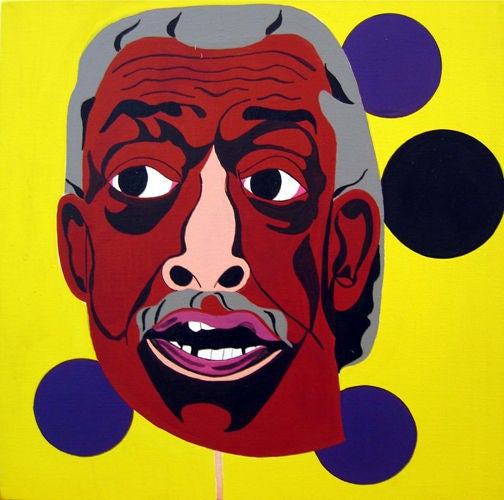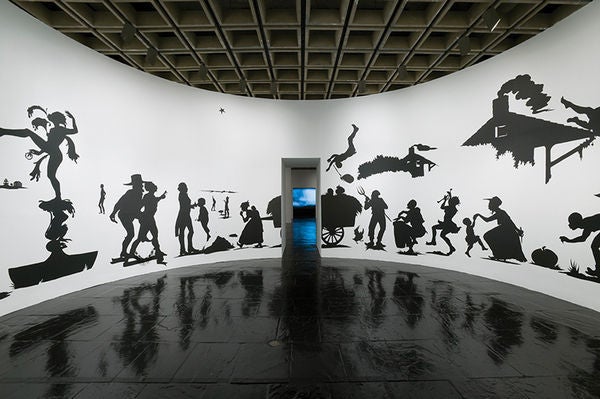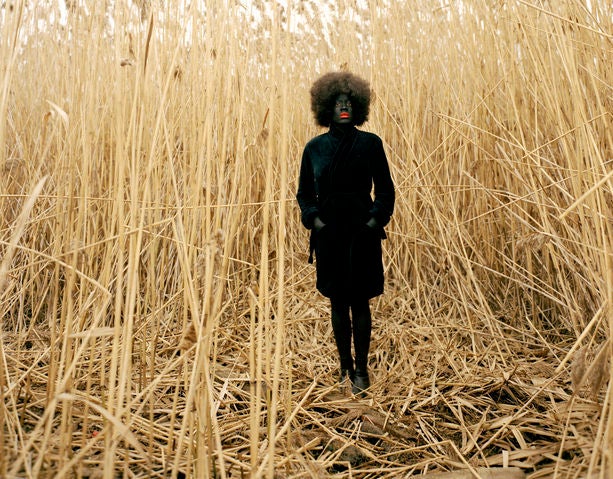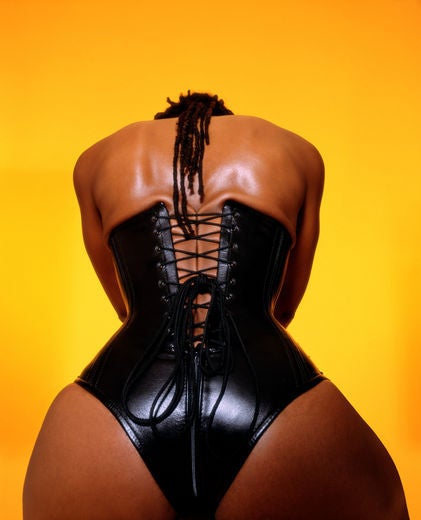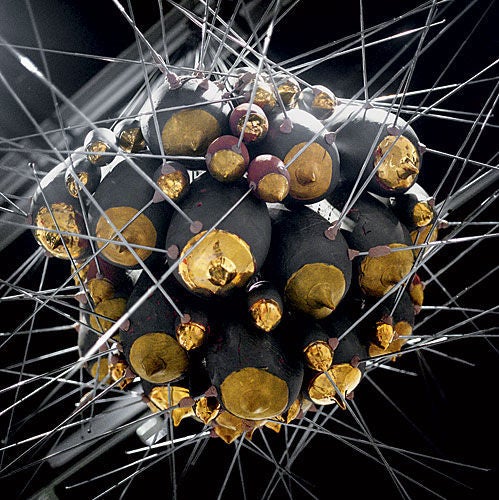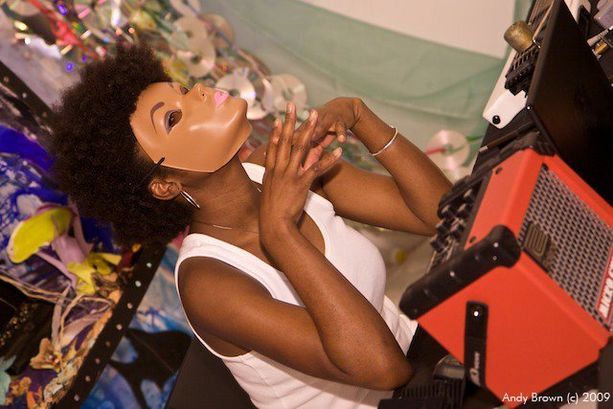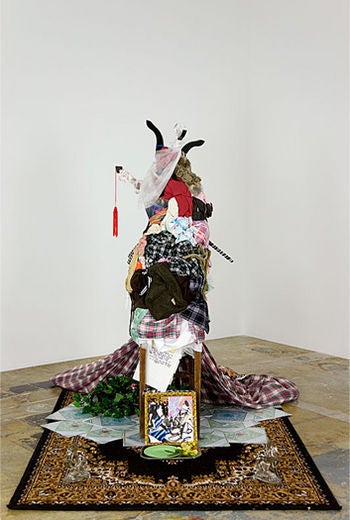WORK: “Don’t Forget About Me (Keri).” 2009
Working with paintings, photography and collage, Thomas explores notions of Black beauty and female representation in popular culture. The New York Times called her work “a mix of rhinestones, acrylic and attitude.” “Her brash, larger-than-life paintings of great-looking black women in florid 1970s-style interiors rough up the history of painting while pushing buttons regarding class, taste, race and gender,” said one reviewer.
Find out more about Mickalene Thomas, here.
WORK: “Riffs on Real Time.”
Hewitt, 33, is a photographer and sculptor born in New York City. Her dense still life arrangements combine personal family artifacts and place them within a historical context. New York Magazine declared her one it’s “influentials.”
Find out more about Leslie Hewitt, here.
WORK: “Untitled.” 2003
Kenyan-born artist Wangechi Mutu often uses painting and collage to explore female sexuality and the myths surrounding African women as “wild and exotic.” “Divine and decadent” is how Time Out New York describes the new mom’s luscious work.
Find out more about Wangechi Mutu, here.
WORK: “Untitled.” 2009
Former Ford assembly worker, Abney, 28, often pairs politics with celebrity news and scandal in her bold paintings. “I’m fascinated by how celebrity news has become not more interesting, but more important than politics,” she told W Magazine.
Find out more about Nina Chanel Abney, here.
WORK: “Slavery, Slavery.” 1997
Artist Kara Walker creates silhouettes dealing with America’s dirtiest history: slavery. Renowned art critic Jerry Saltz described Walker’s larger-than-life depictions of antebellum slavery—some towering as high as 50-feet—as “bitterly beautiful.”
Find out more about Kara Walker, here.
WORK: “One Day and Back Then (Standing).” 2007
Multimedia artist Xaviera Simmons often combines performance, video and photography to examine assumed notions surrounding African American identities. “Xaviera Simmons’ work challenges existing ideas regarding history, community and art by allowing viewers and artists to participate in the environments she creates," Micheal E. Shapiro, director of the High Museum in Atlanta, said of the artist’s work.
WORK: “Black Leather Lace-Up.” 2001
Jamaican-born mixed-media artist Renee Cox examines Black female sexuality and politics, often using her own body as subject. Her interpretation of the Last Supper—in which she appeared naked, standing in for Jesus Christ with only Black disciples—caused an uproar among Catholics. “The hoopla and the fury are because I’m a Black female,” she responded. “It’s about me having nothing to hide.”
Find out more about Renee Cox, here.
WORK: “Queen Bee.” 2008
Brooklyn-based artist Simone Leigh works with ceramics to create oversized installations that examine issues surrounding race, gender and culture. Here she uses terra cotta, porcelain and graphite to create a stunning chandelier-like object.
Find out more about Simone Leigh, here.
Multi-media artist Kenya Robinson’s recent exhibition “HAIRPOLITIC: The Pursuit of Nappiness” addressed the unwritten rules and politics of culture and how they affect what we consider beautiful.
Read Kenya’s musings on her blog, Workspace.
WORK: “Crone-Huntress.” 2007
Baltimore native Shinique Smith uses second-hand clothing and other found materials to create towering sculptures, for which she is best known for. Her work has been exhibited at the New Museum and the Studio Museum in Harlem, among others.
Find out more about Shinique Smith, here.

